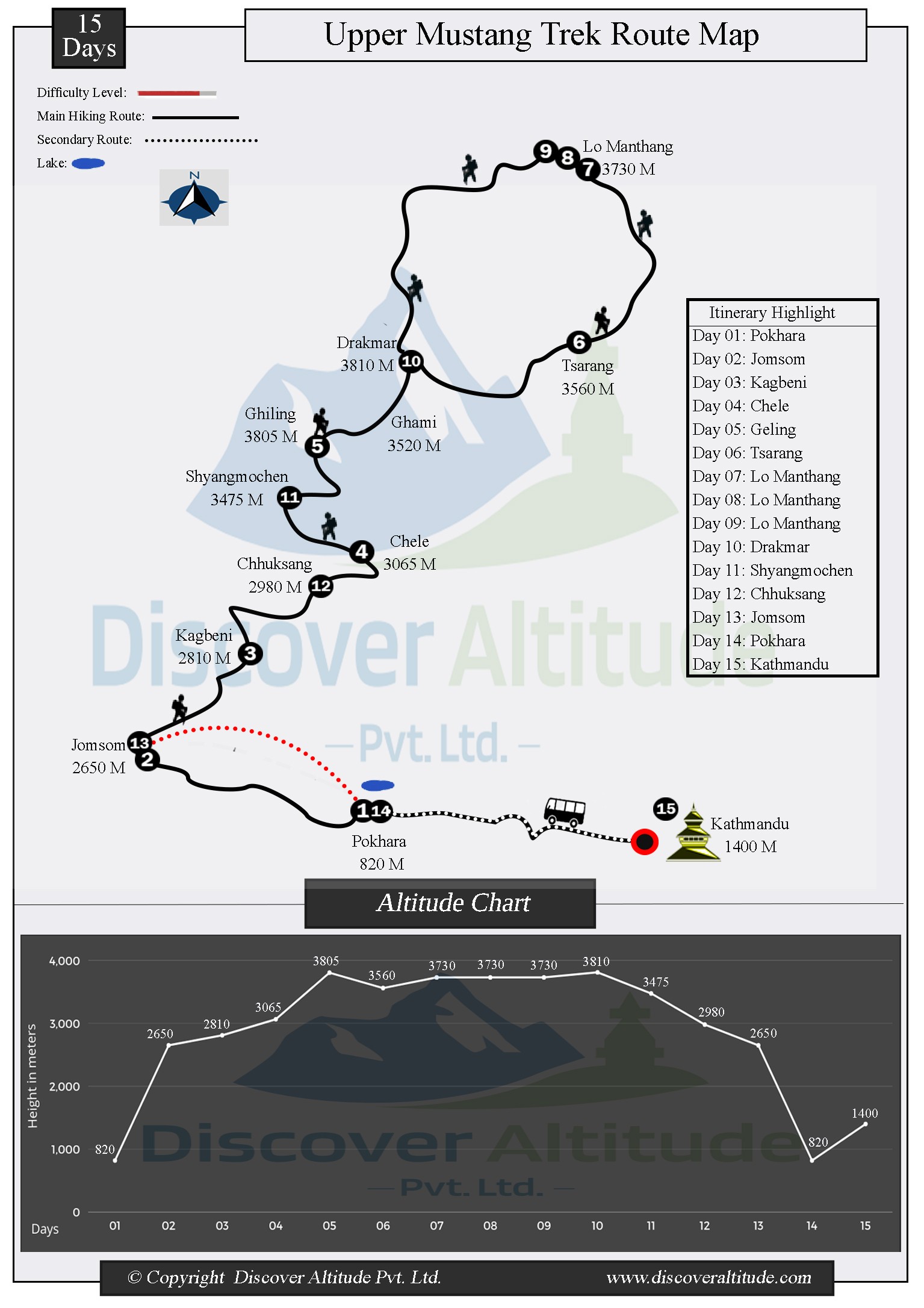Upper Mustang is located to the north of the famous Pokhara city in the upper region of Mustang District which is about 50 kilometers from the district headquarters of Jomsom. The Upper Mustang region once was the kingdom of “Lo” which was established by “Ami Pal “a Warrior who came from western Tibet in the 1380s of which Lo-Manthang was the capital city.
The Upper Mustang trek goes along the ancient trade route between Indian sub-continent countries to Tibet which was widely used during the 15th to 17th century for Barter trading, especially salt. The Upper Mustang region falls in Nepal’s remote rain shadow area which is surrounded by Tibet on three sides- east, west, and north.
The Lo-Manthang remained as a kingdom of its own until Nepal was united by Prithivi Narayan Shah in the 17th century however, Nepal continued to provide special designation as the kingdom of its own until Nepal was declared a republic in 2008.
The upper Mustang trek is filled with ancient caves, grand canyons, Himalayan vistas, ancient villages, and monasteries with rugged mountain views throughout the journey.
During the upper Mustang trekking, you can experience pure Tibetan Buddhist culture virtually unchanged since the 14th century wherein most of the town is abounding with ancient monasteries, Chortens, and Mani-walls which are all intact like in the past.
Lo-Manthang is also well known as “Little Tibet” or “Mud-city” where inside, you can observe the mud-made Buddhist monuments, monasteries, local houses, and Palace with fine medieval Tibetan architecture which stands as testimony to Lo-Manthang’s prosperity and rich cultural heritage.
Besides that, you also get to visit the local “Amchi School” where they learn and teach the traditional herbal medicine recipes to cure different diseases.
During the trekking to Upper Mustang, we can detour to Jhong which has abundant caves scattered in the region which bear testimony of prehistoric settlers and the ancient monasteries which will certainly provoke your curiosity about art and its connection to their cultures.
Upper Mustang remained a forbidden region for foreigners as it was only opened to tourists in 1992. However, the area is still subject to acquiring special trekking permits to limit the number of tourists.
How to get to the trailhead of Upper Mustang Trekking?
- If you are starting the journey to Upper Mustang first you need to drive to Pokhara which takes about 6 hours to reach or you also can take a flight instead and it only takes about 30 minutes
- Once you get to Pokhara city you can take a morning flight to Jomsom and take a walk to Kagbeni from where the trek to Upper Mustang begins.
- As for the other options, you can take a long arduous drive to Jomsom from Pokhara as well which takes about 8-10 hours
Upper Mustang trek route.
The trek begins from Jomsom and goes to Kagbeni (2810M) along the Kaligandaki River for the first night of the trek. The Upper Mustang region begins onwards from Kagbeni. Then, the trek goes to Chele (3065M), Ghiling (3805M), and Tsarang (3560M) for another three nights before reaching the trip’s major highlight, Lo-Manthang (3730M).
In the Lo-Manthang region, we take a few days extra as part of the exploration, and after that trek goes to Drakmar (3810M) for another night. Trek now retraces back to Shyangmochen (3475M) and to Chhuksang (2980M) for other nights before spending our last night in Jomsom (2650M). After this, we took a morning flight back to Pokhara and back to Kathmandu to finish our journey.
what are the required trek permits and fees for Upper Mustang trekking?
- “Annapurna conservation area” entrance permit which costs 3000 rupees per person.
- Upper Mustang “special trekking permit” costs USD 500 per person for 10 days if you spend more duration, it costs USD 50 per day.
Regulations for Upper Mustang Trek.
Special trekking permits only can be obtained from registered trekking companies in Nepal.
You must be a minimum of two people to obtain permits for the upper Mustang.
You must be accompanied by a government license holder guide during the trek.
Filming, documentaries, and flying drone-camera only can be done with special permits from authorized government bodies.












